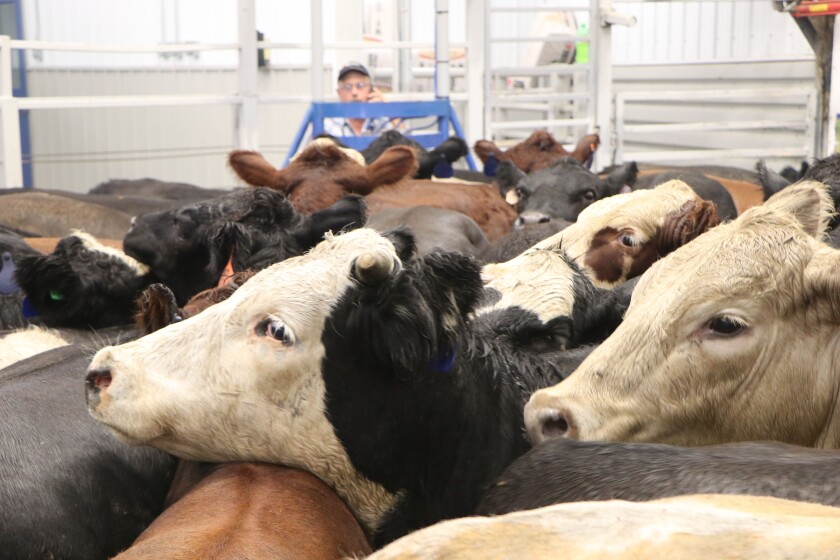Recognizing Livestock Threat Security (LRP) Insurance Coverage: A Comprehensive Guide
Browsing the world of livestock danger security (LRP) insurance policy can be a complicated endeavor for lots of in the agricultural market. From how LRP insurance coverage functions to the various insurance coverage alternatives offered, there is much to reveal in this extensive guide that might potentially shape the method livestock producers come close to danger management in their businesses.

How LRP Insurance Policy Works
Occasionally, understanding the auto mechanics of Animals Threat Protection (LRP) insurance coverage can be complicated, yet breaking down just how it works can give clearness for herdsmans and farmers. LRP insurance policy is a threat monitoring device made to shield livestock manufacturers against unexpected cost declines. It's essential to note that LRP insurance is not an income guarantee; instead, it focuses exclusively on price threat defense.
Eligibility and Insurance Coverage Options

When it comes to insurance coverage options, LRP insurance coverage uses manufacturers the flexibility to choose the coverage level, insurance coverage period, and endorsements that finest fit their risk management requirements. By comprehending the eligibility requirements and protection options available, animals manufacturers can make enlightened choices to handle danger efficiently.
Benefits And Drawbacks of LRP Insurance Policy
When reviewing Animals Risk Protection (LRP) insurance coverage, it is necessary for animals manufacturers to weigh the advantages and drawbacks inherent in this threat administration tool.

Among the key advantages of LRP insurance policy is its capability to provide security versus a decline in animals prices. This can help guard manufacturers from monetary losses resulting from market variations. Additionally, LRP insurance coverage supplies a degree of versatility, permitting manufacturers to personalize coverage degrees and policy durations to fit their specific requirements. By securing a guaranteed cost for their livestock, manufacturers can better handle danger and strategy for the future.
Nevertheless, there are likewise some disadvantages to consider. One restriction of LRP insurance is that it does not secure versus all kinds of dangers, such as disease episodes or natural catastrophes. Premiums can in some cases be pricey, particularly for producers with huge livestock herds. It is vital for manufacturers to very carefully assess their individual threat direct exposure and monetary situation to identify if LRP insurance policy is the appropriate danger administration tool for their procedure.
Understanding LRP Insurance Policy Premiums

Tips for Making Best Use Of LRP Conveniences
Making best use of the benefits of Animals Danger Security (LRP) insurance coverage needs calculated preparation and aggressive danger administration - Bagley Risk Management. To visite site make the many of your LRP coverage, take into consideration the complying with pointers:
Regularly Analyze Market Conditions: Remain notified concerning market trends and price fluctuations in the animals sector. By keeping an eye on these aspects, you can make informed choices concerning when to acquire LRP insurance coverage to protect versus potential losses.
Establish Realistic Protection Degrees: When picking coverage degrees, consider your production additional reading expenses, market worth of animals, and potential dangers - Bagley Risk Management. Setting sensible coverage levels guarantees that you are adequately shielded without paying too much for unnecessary insurance policy
Diversify Your Insurance Coverage: Rather than counting entirely on LRP insurance policy, consider expanding your danger management strategies. Incorporating LRP with other danger monitoring tools such as futures contracts or choices can supply detailed coverage against market uncertainties.
Review and Readjust Protection Consistently: As market problems change, regularly evaluate your LRP protection to guarantee it lines up with your current threat exposure. Changing insurance coverage levels and timing of acquisitions can help enhance your danger security strategy. By following these tips, you can take full advantage of the advantages of LRP insurance policy and protect your livestock operation versus unanticipated risks.
Final Thought
In final thought, livestock danger defense (LRP) insurance coverage is a valuable tool for farmers to handle the monetary threats related to their animals procedures. By recognizing how LRP functions, qualification and protection alternatives, along with the pros and disadvantages of this insurance, farmers can make enlightened choices to protect their incomes. By meticulously thinking about LRP costs and executing approaches to maximize benefits, farmers can mitigate prospective losses and make sure the sustainability of their procedures.
Livestock manufacturers interested in acquiring Livestock Danger Security (LRP) insurance policy can check out a range of eligibility criteria and coverage options tailored to their certain animals operations.When it comes to coverage choices, LRP insurance policy offers producers the adaptability to pick the protection level, insurance coverage period, and endorsements that finest suit their risk administration demands.To comprehend the details of Livestock Danger Protection (LRP) insurance policy completely, recognizing the variables influencing LRP insurance premiums is essential. LRP insurance premiums are determined by numerous elements, consisting of the protection degree selected, the expected price of livestock at the end of the insurance coverage period, the kind of animals being insured, and the size of the coverage duration.Testimonial and Readjust Coverage Frequently: As market problems change, occasionally examine your LRP protection to ensure it straightens with your existing danger exposure.
Comments on “Equip Your Business: Bagley Risk Management Insights”